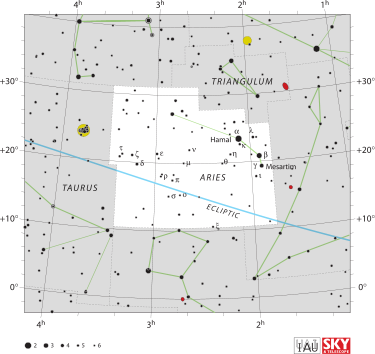2021 November 29
Nova in Aries?

We have a possible (*) Nova in Aries, currently at mag 11.9
An optical transient was reported by the MASTER survey at 15.1 mag (unfiltered) on Nov 26.826. It was also independently discovered by Yuji Nakamura at 11.7 mag (unfiltered) on Nov 28.469.
The progenitor appears to have been mag 21.9 r, suggesting an amplitude of ~10 mags.
Latest observation by Robert Fidrich, Budakeszi, Hungary (using a remote scope at Mayhill, New Mexico) has it at 11.9V on Nov 29.089 UT.
A spectrum by Klein et al. (https://www.astronomerstelegram.org/?read=15069 ) “shows a hot blue continuum with strong Balmer lines at an apparent redshift of zero, confirming a galactic origin for AT2021afpi. It also exhibits HeI and HeII emission lines. The spectrum resembles that of V2860 Ori, a classical nova of subclass He/N (De et al. 2021). Given this, and the rapid 10 magnitude brightening, AT2021afpi is likely a young He nova”.
Further observations (photometry and spectrometry) are requested. It is unusual to find a nova in Aries!
Nova Ari 2021 (MASTER OT J030227.28+191754.5; AT2021afpi) is at RA 03 02 27.31 Dec +19 17 54.4 (J2000.0)
Keep an eye on the BAA Forum for further updates, including chart/sequence availability: https://britastro.org/node/26372
Edit: chart here and sequence here.
(*) Edit 2: Further info on this transient continues to roll in. Isogai et al. report that the spectrum of this object suggests it is a dwarf nova of the WZ Sge type. They also observed early superhump-like modulations that occur in this type of object. If confirmed this would be the WZ Sge-type dwarf nova having the largest outburst amplitude ever seen.
Jeremy Shears,
Director, Variable Star Section
| The British Astronomical Association supports amateur astronomers around the UK and the rest of the world. Find out more about the BAA or join us. |
